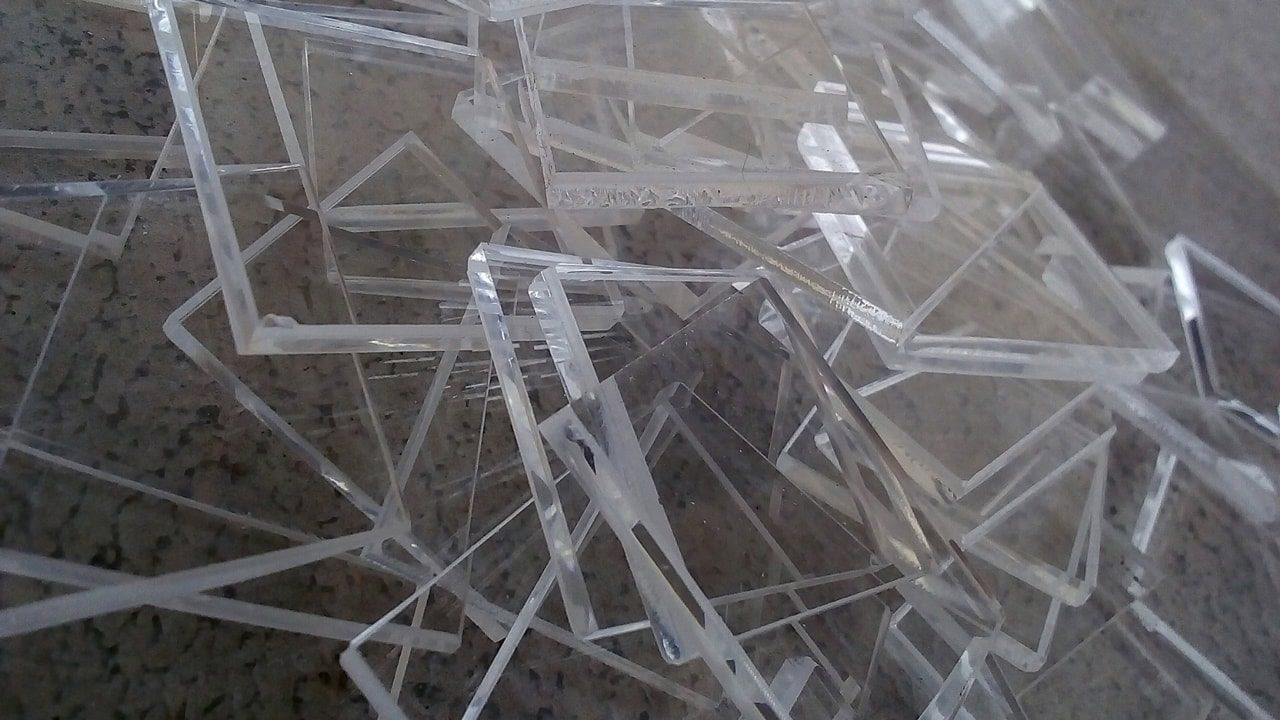Sustainability is no longer a trend; it’s a necessity. Professionals continue to seek reliable solutions to reduce waste, conserve resources, and minimize ecological impact.
Sustainable design benefits the planet but also enhances aesthetics and functionality. Among the top options, eco-friendly acrylic stands out as a revolutionary choice.
Importance of Eco-Friendly Materials in Modern Design
Sustainability has been a defining factor in modern design. From architecture and interior design to fashion and product development, everyone looks for eco-conscious consumption. That’s why designers and manufacturers are shifting toward eco-friendly materials.
Conventional design materials (plastic, metal, and synthetic fabrics) have long been favored. However, their environmental footprint is significant.
01. Plastic Pollution: The global production of plastic exceeds 400 million tons annually, with only 9% of plastic waste being recycled. The rest ends up in landfills, oceans, and ecosystems, causing long-term environmental damage.
02. Synthetic Fabrics: Materials like polyester and nylon are derived from petroleum, consuming fossil fuels and releasing microplastics into waterways during washing.
03. Metal Extraction: Mining metals like aluminum and steel requires vast amounts of energy and water, contributing to deforestation and habitat destruction. The production of one ton of steel emits approximately 1.85 tons of CO₂.
Rise of Eco-Friendly Materials
Eco-friendly materials are designed to support sustainability and the circular economy. It enables reuse, recycling, or biodegradability. The demand for environmentally conscious products is skyrocketing.
- Consumer Preference: Studies show that 73% of global consumers prefer brands that prioritize sustainability. This shift is driving companies to adopt sustainable practices.
- Circular Economy: Sustainable materials, such as bamboo, recycled acrylic, and biodegradable composites, promote a closed-loop system. Here, waste is minimized, and materials are repurposed.
- Innovative Solutions: Designers are exploring alternatives such as mycelium-based packaging, algae-derived textiles, and upcycled construction materials to reduce environmental impact.
Industries are recognizing that eco-friendly materials aren’t just beneficial for the planet. They also align with consumer expectations and regulatory requirements.

Benefits of Using Eco-Friendly Materials
The advantages of sustainable materials extend beyond environmental impact. They also offer economic and social benefits.
a. Reduced Carbon Footprint: Using recycled or biodegradable materials can cut emissions by up to 50% compared to traditional materials.
b. Energy Efficiency: Sustainable materials often require less energy to produce, reducing overall resource consumption.
c. Brand Reputation: Companies that adopt eco-friendly design strategies gain consumer trust and loyalty, thereby enhancing their market position.
d. Long-Term Sustainability: Investing in green materials ensures durability and cost-effectiveness, eliminating the need for frequent replacements.
Real-World Examples of Sustainable Design
- Adidas’ Recycled Ocean Plastic Sneakers: The brand has produced millions of shoes using plastic waste collected from oceans to drive innovative sustainability.
- Tesla’s Sustainable Manufacturing: The company integrates recycled materials (acrylic) into its vehicle production, reducing waste and energy consumption.
- Eco-Friendly Architecture: Buildings like The Edge in Amsterdam use sustainable acrylics and energy-efficient systems to minimize environmental impact.
Eco-Friendly Materials in Design
Sustainable design continues to reshape industries. It prioritizes materials to minimize environmental impact while maintaining functionality and aesthetic appeal.
Eco-friendly materials fall into three primary categories – natural, recycled, and biodegradable. Each offers unique benefits in sustainability and design.
Natural Materials
i. Bamboo: One of the fastest-growing plants, bamboo requires no pesticides and regenerates quickly. It is widely used in flooring, furniture, and textiles.
ii. Cork: Harvested from cork oak trees without harming them, cork is lightweight, durable, and commonly used in insulation, flooring, and accessories.
iii. Hemp: A highly sustainable crop, hemp requires less water and grows quickly. It is used in textiles, biodegradable plastics, and even construction materials.
Iv. Organic Cotton: Unlike conventional cotton, organic cotton is grown without synthetic pesticides, reducing soil and water contamination.
v. Wool: Naturally insulating and biodegradable, wool is used in textiles and as a sustainable building insulation material.
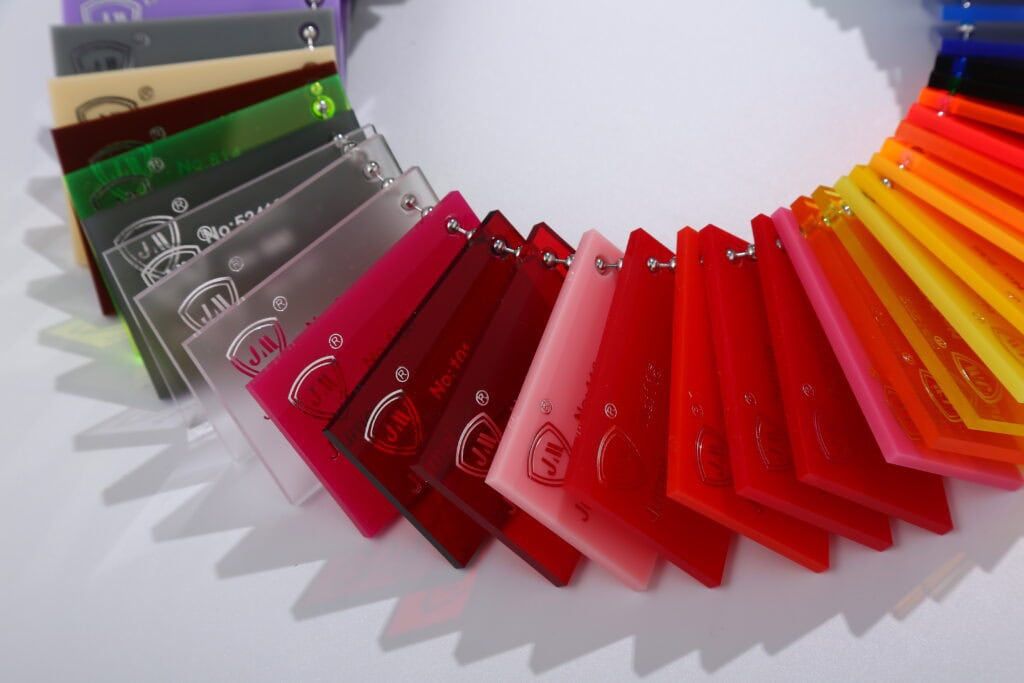
Recycled Materials
01. Recycled Glass: Used in countertops, tiles, and decorative elements, recycled glass helps reduce landfill waste and lower energy consumption.
02. Recycled Metal: Aluminum and steel can be endlessly recycled without losing quality, making them ideal for construction and product design.
03. Recycled Paper: Used in packaging, furniture, and insulation, recycled paper helps reduce deforestation and energy consumption.
04. Recycled Acrylic: Repurposed acrylic plexiglass has various uses, including display cases, lighting fixtures, advertising, and partition walls.
Biodegradable Materials
a. Plant-Based Plastics: Made from renewable sources such as corn or sugarcane, these plastics decompose more quickly than conventional petroleum-based plastics.
b. Bioplastics: Derived from natural sources, bioplastics are used in packaging, disposable cutlery, and medical applications.
c. Organic Compounds: Materials such as mycelium (fungus-based) and algae-based textiles are emerging as sustainable alternatives in the fashion and packaging industries.
Environmentally Friendly Acrylic Sheet
Acrylic is a staple in design, architecture, and advertising due to its versatility, durability, and aesthetics. However, traditional acrylic (PMMA) derives from petroleum sources, contributing to environmental concerns such as plastic waste and carbon emissions.
Eco-friendly acrylic offers a sustainable alternative, providing the same benefits as conventional acrylic while reducing environmental impact through greener production methods and recyclable content.
What is Eco-Friendly Acrylic?
Eco-friendly acrylic is designed to minimize the ecological footprint of traditional acrylic materials. Unlike conventional acrylic, which is made from non-renewable petroleum-based polymers. Sustainable acrylic is produced using –
- Recycled Acrylic: Made from post-industrial or post-consumer acrylic waste, reducing landfill accumulation and conserving raw materials.
- Biodegradable Acrylic: Some innovative formulations incorporate biodegradable compounds that break down naturally over time.
- Low-Emission Manufacturing: Sustainable acrylic is produced using energy-efficient processes. It reduces carbon emissions and the use of toxic chemicals.
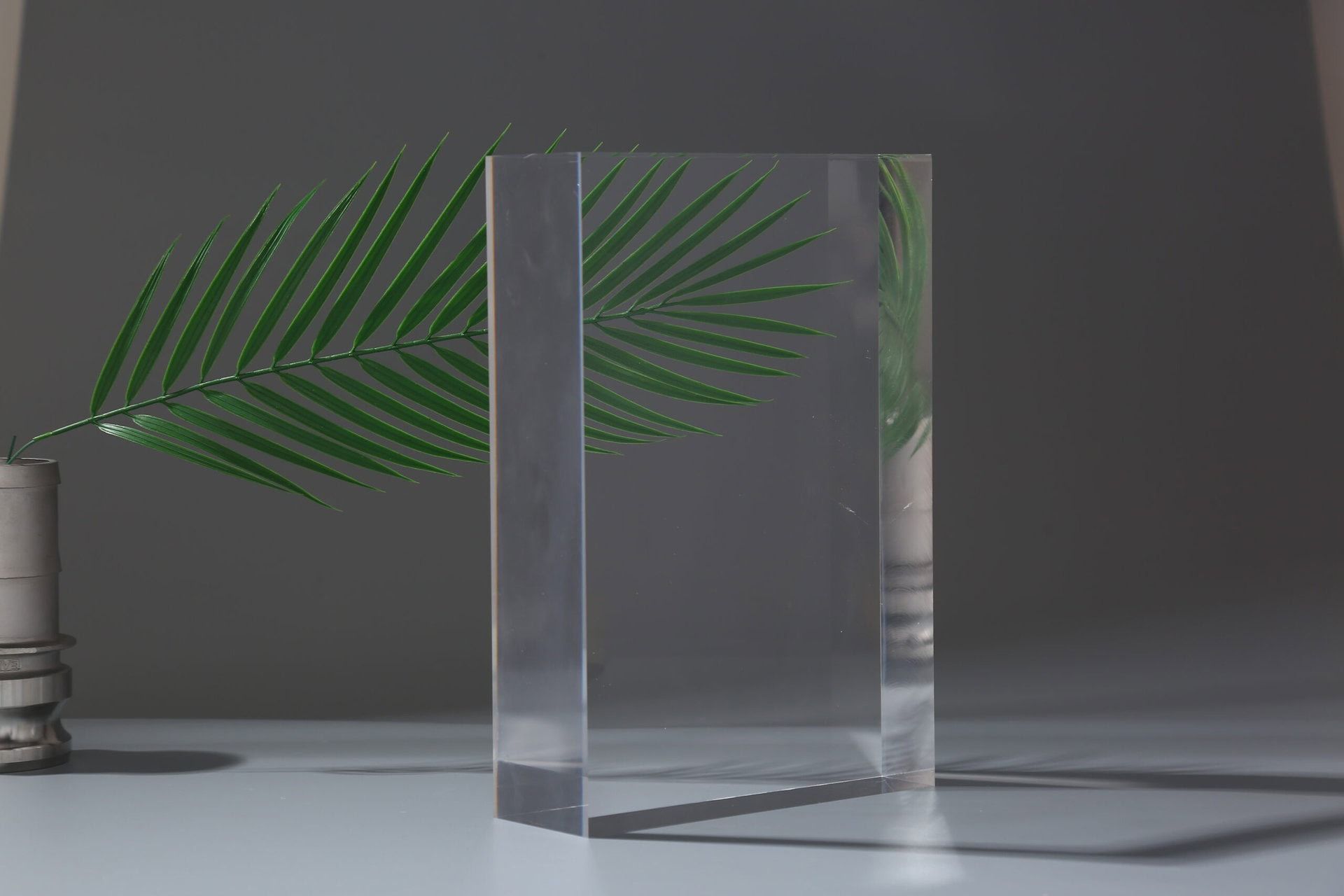
Benefits of Eco-Friendly Acrylic
01. Durability
Eco-friendly acrylic retains the durability of traditional acrylic. It can be resistant to wear, UV exposure, and environmental factors. It eliminates the need for frequent replacements, thereby lowering consumption and waste.
Many architectural firms now use recycled acrylic panels for outdoor signage and facades. It’s because they’re capable of withstanding harsh weather conditions.
02. Energy Efficiency
Acrylic’s ability to diffuse light effectively makes it an energy-efficient material for architectural uses. By optimizing natural lighting, eco-friendly acrylic reduces the need for artificial illumination.
Extruded acrylic panels are used in skylights and office partitions to enhance daylight penetration. It reduces reliance on electric lighting.
03. Recyclability
One of the most significant advantages of eco-friendly acrylic is its recyclability. Many sustainable acrylic options are made from recycled objects. They can be recycled again at the end of their lifecycles.
Companies specializing in acrylic fabrication now offer take-back programs. Acrylic sheets are collected, processed, and repurposed into new products.
04. Low Environmental Impact
Traditional acrylic production involves the use of toxic chemicals and high energy consumption. Eco-friendly acrylic is manufactured using fewer pollutants, reducing its environmental footprint.
Some manufacturers have adopted water-based production methods that eliminate the use of harmful solvents. The process with a specified thickness becomes safe for workers and the environment.
05. Aesthetic Appeal
Eco-friendly acrylic maintains the same optical clarity, smooth finish, and versatility as traditional acrylic. It allows professionals to enjoy more flexibility in design without sacrificing aesthetics for sustainability.
High-end retail brands use customized acrylic for display cases and signage. Sustainable properties in a specific mm range can achieve prints in the desired forms.
Some Applications of Eco-Friendly Acrylic
- Green Architecture: Sustainable acrylic panels are used in energy-efficient buildings to enhance natural lighting and reduce energy consumption.
- Eco-Conscious Advertising: Brands are shifting to recycled acrylic for signage and promotional displays to attract more customers.
- Sustainable Product Design: Designers are incorporating biodegradable acrylic into consumer goods, reducing plastic waste in packaging and everyday items.
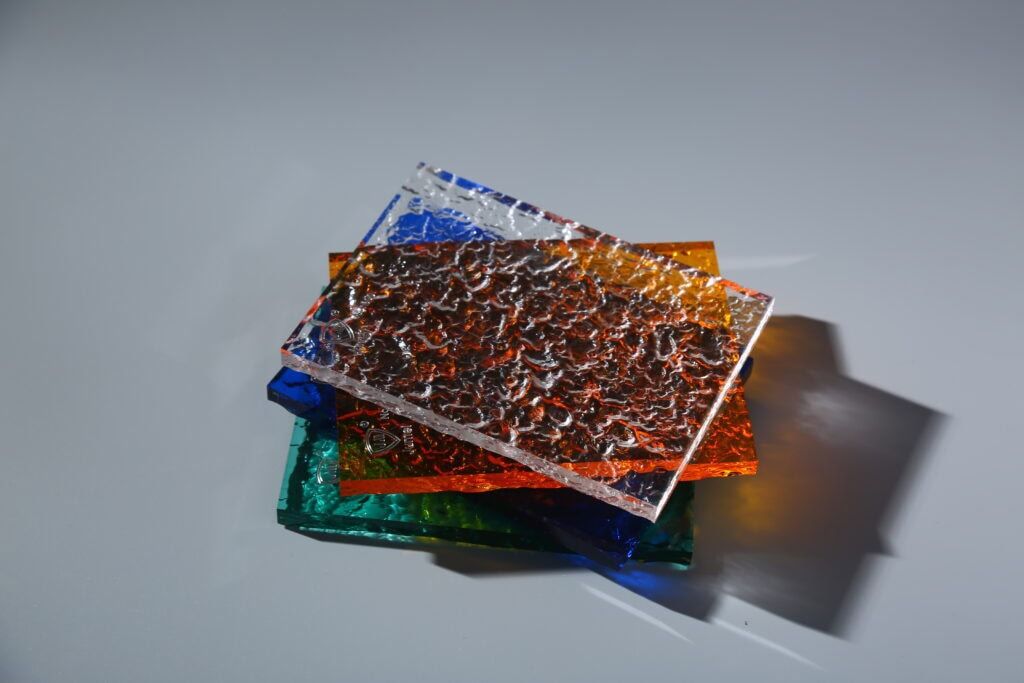
Eco-Friendly Recycled Acrylic in Architecture
Sustainable Facades and Roofing
Eco-friendly acrylic is widely used in transparent facades, skylights, and roofing systems to maximize natural light. Unlike conventional glass, acrylic is lighter, more impact-resistant, and easier to install.
- Energy Efficiency: Acrylic panels allow up to 92% light transmission, reducing the need for artificial lighting during the day.
- Weather Resistance: UV-resistant acrylic maintains clarity and durability even in harsh climates for green buildings and passive solar designs.
The Edge in Amsterdam is one of the world’s most sustainable office buildings. It incorporates acrylic-based skylights to optimize daylight penetration and reduce energy consumption.
Partitions and Room Dividers
Acrylic panels serve as modern, eco-friendly partitions in offices, homes, and commercial spaces. It offers privacy while maintaining an open, airy atmosphere.
- Transparency and Light Flow: Unlike solid walls, acrylic partitions allow natural light to pass through, reducing reliance on artificial lighting.
- Customization: Available in frosted, tinted, or textured finishes, acrylic partitions can be tailored to suit different design aesthetics.
Many co-working spaces and open-plan offices use recycled acrylic partitions. It creates flexible work environments while maintaining sustainability goals.
Decorative Elements
Eco-friendly acrylic is a versatile material for custom-designed wall panels, ceiling features, and furniture. Thus, it adds a sleek, modern touch to the interiors.
- Durability: Acrylic is scratch-resistant and long-lasting. It can introduce life to your brand in high-traffic areas.
- Sustainability: Recycled acrylic minimizes waste through a closed-loop production system, resulting in a minimal environmental impact.
Luxury hotels and retail stores use eco-friendly acrylic furniture and decorative panels. A visually striking interior lets acrylic align with green design principles.
Energy-Efficient Lighting
Acrylic plays an essential role in energy-efficient lighting solutions, including light diffusers, illuminated signage, and lightboxes.
- Light Diffusion: Acrylic diffusers evenly distribute light, reducing glare and enhancing energy efficiency.
- Sustainable Signage: Many brands now utilize recycled acrylic for LED signage, reducing plastic waste while maintaining high visibility.
Sustainable retail spaces integrate acrylic lightboxes and signage using glue and resin. Such DIY actions don’t take much pre-processing to enhance branding.
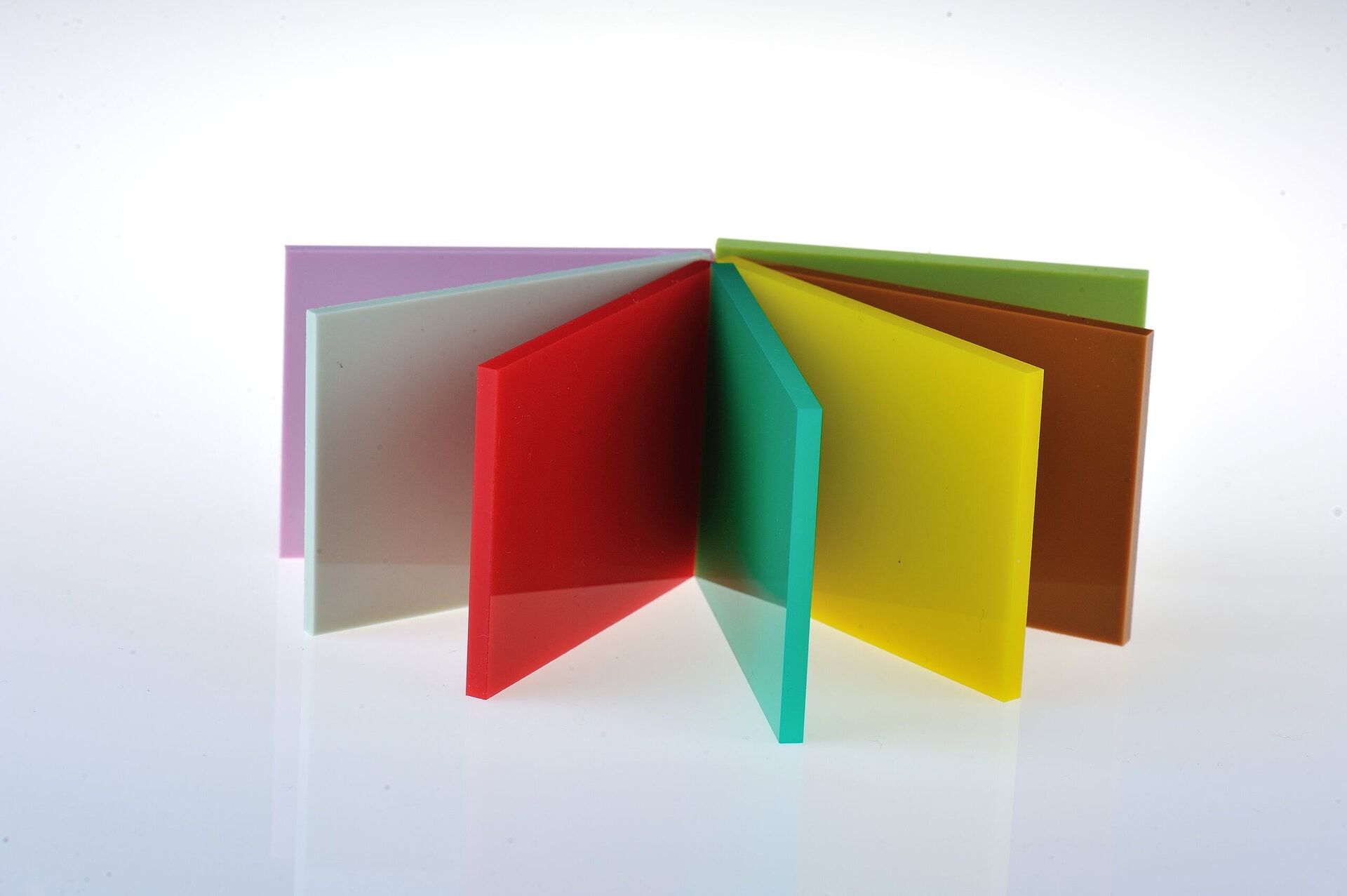
Eco-Friendly Acrylic Sheets in Production and Manufacturing
Sustainable Packaging
Packaging plays a crucial role in product presentation and protection. Conventional plastic packaging contributes significantly to environmental pollution.
- Recycled Acrylic Packaging: Many manufacturers now use post-consumer recycled acrylic to create packaging that minimizes plastic waste.
- Reusable Designs: Unlike single-use plastics, acrylic packaging can be reused multiple times, making it ideal for premium product packaging.
Some luxury brands utilize recycled acrylic for their perfume bottles and cosmetic packaging, ensuring sustainability without compromising on aesthetics.
Furniture Design
Acrylic is widely used in sustainable furniture designs. Unlike wood or metal, acrylics are lightweight, resistant to wear, and recyclable, making them a preferred choice for eco-conscious designers.
- Durability: Acrylic furniture is scratch-resistant and UV-stable, ensuring longevity in both indoor and outdoor settings.
- Versatility: Transparent, frosted, or coloured finished products can complement a wide range of design aesthetics.
Modern furniture brands often incorporate specific instructions for the creation of recycled chairs, tables, and shelving units. Even healthcare settings can mitigate reliance on virgin materials.
Consumer Products
Eco-friendly acrylic is widely used in displays, kiosks, and signage. It’s due to its high durability and sustainability for commercial applications.
- Retail Displays: Many stores utilize recycled acrylic for display cases and shelving to minimize their environmental footprint.
- Signage: Acrylic signage is weather-resistant and recyclable, making it a sustainable choice for branding and advertising.
Companies specializing in custom acrylic fabrication offer eco-friendly solutions for retail and corporate environments.
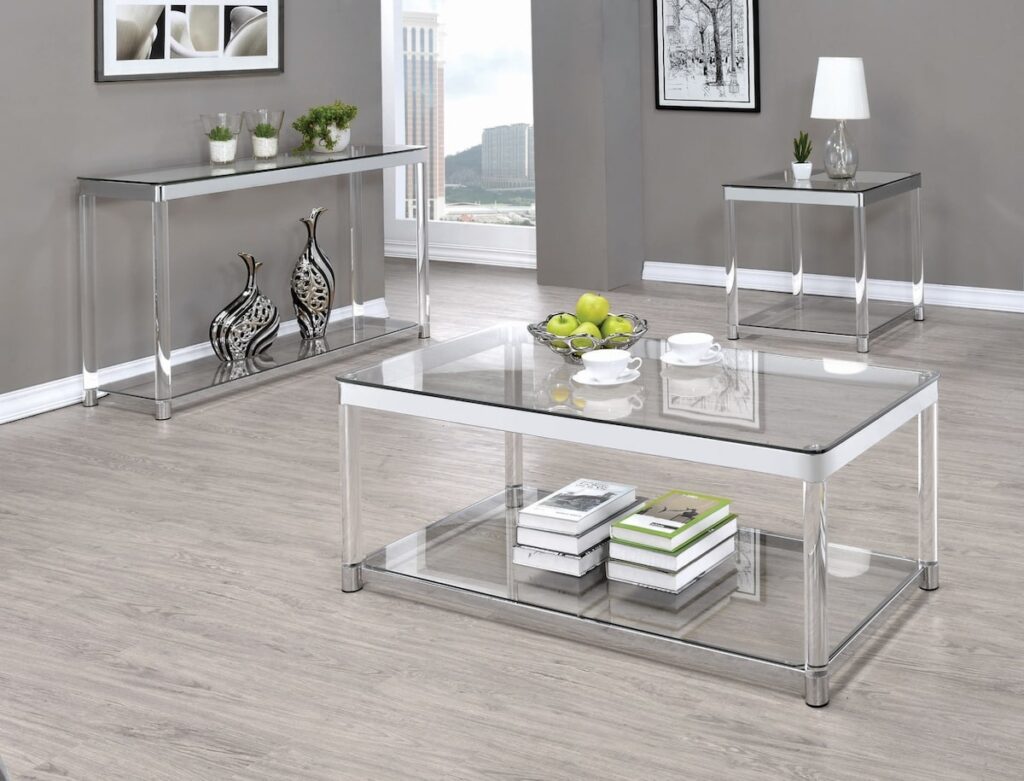
Eco-Friendly Acrylic vs Other Sustainable Materials
Eco-friendly acrylic Plexiglas is gaining popularity as a sustainable alternative to traditional materials. Understand its advantages against other common materials like glass, bioplastics, wood, and bamboo.
Acrylic vs Glass
Acrylic is significantly lighter than glass for easy transport and installation. It’s 17 times more resistant to breakage than glass for large installations such as skylights, partitions, and signage.
Acrylic allows up to 92% light transmission, compared to 80% – 90% for glass. That’s why it’s ideal for energy-saving architectural designs. Glass requires additional insulation layers to maintain energy efficiency. Acrylic can be coated with UV-resistant films to enhance thermal performance.
Both acrylic and glass can be recycled, but eco-friendly acrylic offers more potential for repurposing. Recycled acrylic sheets are increasingly used in advertising displays, furniture, and architecture.
Acrylic vs Bioplastics
Eco-friendly acrylic is more durable and versatile than most bioplastics. It may have limited structural integrity or flexibility. Bioplastics tend to degrade more quickly, making them less suitable for long-term applications.
Acrylic is easier to recycle without significant loss in material quality. Meanwhile, bioplastics require specialized recycling processes that are not widely available. Some bioplastics cannot be recycled in conventional waste facilities, resulting in higher disposal costs.
Acrylic vs Wood and Bamboo
Acrylic provides a modern aesthetic and can be shaped and molded into intricate designs. Wood and bamboo have natural grain limitations. Acrylic can mimic the clarity of glass, whereas wood and bamboo are typically opaque.
Eco-friendly acrylic sourced from recycled materials can be a more sustainable option. Harvested wood and bamboo require constant replenishment. Bamboo is a fast-growing and renewable resource, but harvesting large quantities can lead to soil degradation and habitat loss.
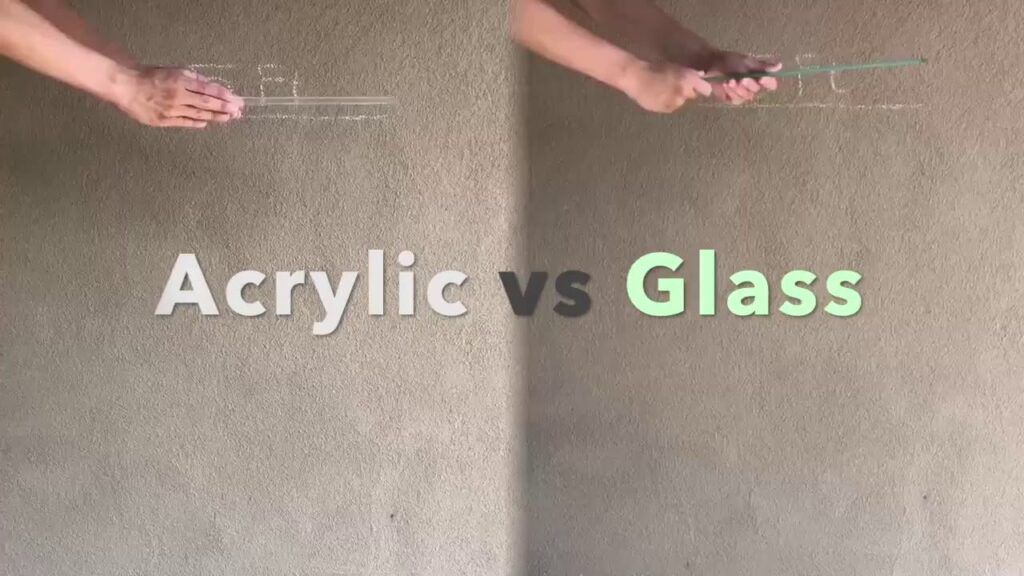
Acrylic vs Other Eco-Friendly Materials
| Factor | Eco-Friendly Acrylic | Glass | Bioplastics | Wood | Bamboo |
|---|---|---|---|---|---|
| Weight and Durability | Lightweight, 17x more impact-resistant | Heavy, prone to breaking under impact | Variable (some options degrade quickly) | Strong and durable but prone to moisture | Strong and lightweight, natural pest resistance |
| Energy Efficiency | High light transmission (up to 92%) | Lower light transmission (80% - 90%) | Limited energy-saving properties | Requires coatings or treatments | Provides natural insulation |
| Recyclability | Highly recyclable (repurposing with quality) | Recyclable but requires special processing | Recyclable, but the process can vary | Recycling options are limited | Continuous harvesting may be required |
| Environmental Impact | lower emissions and fewer toxins | Energy-intensive production | | Made from renewable plant-based sources | sustainable forestry can mitigate the impact | Rapidly renewable without overharvesting |
| Aesthetics and Functionality | Versatile, customizable, sleek modern look | Classic appearance but less design flexibility | Often limited in shape and clarity than acrylic | Rich textures but limited shaping options | Natural wood-like texture, but less flexible |
| Uses in Sustainable Design | Architectural panels, signage, furniture, product packaging | Windows, glass facades, partitions, decorative elements | Food packaging, medical applications, disposable cutlery | Flooring, furniture, decorative accents, construction materials | Panels, flooring, furniture, decorative applications |
Challenges and Considerations with Impact Resistance Acrylic
Eco-friendly acrylic is a promising alternative with many sustainability benefits. However, adopting the material comes with certain challenges and considerations.
01. Cost vs Sustainability
Eco-friendly acrylic is often made from recycled materials. It requires additional processing to ensure quality. Manufacturers employ low-emission techniques to minimize their environmental impact.
Such measures can increase production costs. Some eco-friendly acrylic variants incorporate biodegradable compounds or UV-resistant coatings, adding to the price.
02. Manufacturing and Processing
Laser cutting and CNC machining are preferred methods for shaping acrylic, as they minimize material waste. Some eco-friendly acrylic variants have different heat resistance properties.
They require further adjustments in molding processes. Designers must ensure that their acrylic is sourced from manufacturers following eco-conscious production practices.
03. Consumer Education
Businesses should emphasize how eco-friendly acrylic reduces waste, conserves energy, and supports recyclability. Providing clear comparisons between traditional plastics and sustainable acrylic helps consumers make informed choices.
Consumers should be informed about recycling programs that allow acrylic to be repurposed instead of discarded. Some architectural firms now include sustainability reports in project proposals, showcasing the environmental benefits.
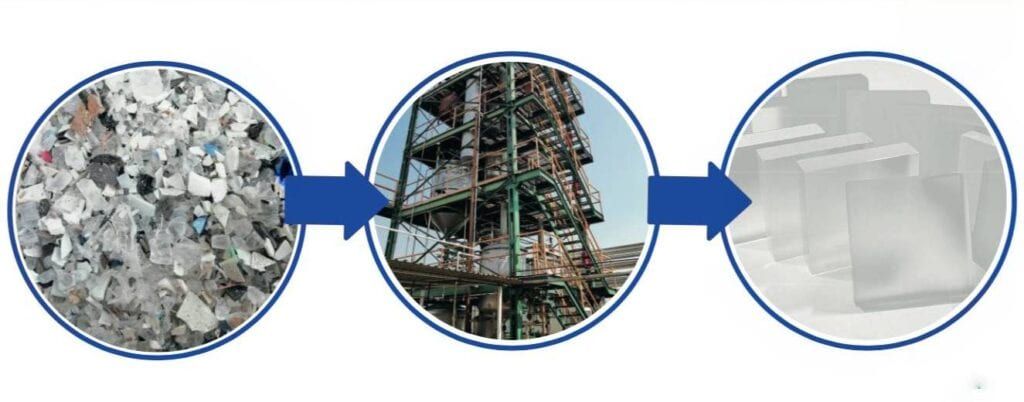
Future of Eco-Friendly Acrylic in Design
Technological advancements in recycling and sustainable production methods are shaping the future of eco-friendly acrylic. Key innovations include –
i. Closed-Loop Recycling Systems: Manufacturers are developing closed-loop processes to recycle multiple times without degrading quality. This reduces waste and supports a circular economy.
ii. Low-Emission Production: New manufacturing techniques are minimizing carbon emissions and toxic chemical usage, making acrylic production more environmentally friendly.
iii. Biodegradable Acrylic: Research is underway to create biodegradable acrylic formulations. It would break down naturally over time, reducing plastic pollution.
Companies like Chemcast® EcoGreen are pioneering eco-friendly acrylic sheet projects, integrating recycled content and sustainable production methods into their materials.
Conclusion
Eco-friendly acrylic stands at the forefront of sustainable design with a remarkable balance between key features and environmental responsibility. It can reduce waste, enhance energy efficiency, and support recyclability across industries. Choosing eco-friendly acrylic contributes to a greener future without sacrificing quality or visual impact.
Get Your Top-Quality Acrylic Products from JUMEI
Even your slightest contribution and commitment can lead to a magnificent change. And Jumei Acrylic is ready with tons of reliable options to meet your requirements. We own the best technology and experts to align with sustainable production. Contact us to know everything we do in more detail.

